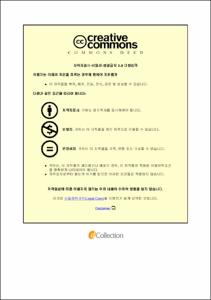국내 크론병 환자에서 정맥 투여 후 Infliximab 농도에 대한 집단 약동학 모형
- Alternative Title
- Population Pharmacokinetic Model of Intravenous Infliximab in Korean Patients with Crohn’s Disease
- Abstract
- Background: Infliximab is a chimeric monoclonal antibody that binds and neutralizes tumor necrosis factor alpha. Since 1998, it has been approved for several autoimmune diseases, including inflammatory bowel disease. The relationship between infliximab exposure and treatment response varies among patients.
Purpose: This study aimed to establish a population pharmacokinetic model of intravenous infliximab in Korean patients with Crohn’s disease.
Methods: We performed a retrospective, single-center analysis of data from 100 patients with Crohn’s disease who received scheduled induction and maintenance therapy at Asan Medical Center, a university hospital in Korea. A population pharmacokinetic model was developed using NONMEM®, and demographic, clinical, and laboratory data were tested to establish covariates of infliximab pharmacokinetics.
Results: One-compartment pharmacokinetic model with first-order elimination best described the serum infliximab concentration measurements. Population pharmacokinetic parameter estimates were 0.012 L/h for clearance (CL) (95% confidence interval: 0.012 - 0.013 L/h) and 6.301 L for the volume of distribution (V) (95% confidence interval: 5.932 - 6.671 L). Covariate analysis showed that CL and V increased as body weight increased. CL was higher in patients with low serum albumin, high serum C-reactive protein, and increasing age, with differing coefficients for each covariate.
Conclusions: Our population pharmacokinetic model suggests that the disposition of infliximab is affected by body weight, age, C-reactive protein, and serum albumin levels in Korean patients with Crohn’s disease.|인플릭시맙은 종양괴사인자 알파(tumor necrosis factor-alpha)에 결합하여 중화시키는 키메라 단일클론항체이다. 인플릭시맙은 1998년부터 염증성 장질환 (inflammatory bowel disease)을 포함하여 여러가지 자가면역질환의 치료제로 승인되었는데, 인플릭시맙의 노출과 치료 반응의 관계는 환자에 따라 다르게 나타난다. 이에 본 연구는 한국인 크론병 환자를 대상으로 정맥 인플릭시맙의 집단 약동학 모형을 구축하는 것을 목표로 하였다. 국내 대학병원인 서울아산병원에서 예정된 유도 및 유지 요법을 받은 크론병 환자 100명의 데이터를 후향적 단일 센터 분석을 수행하였다. NONMEM® version 7.5를 사용하여 집단 약동학 모형을 개발하고 인구 통계학, 임상 및 실험실 데이터를 테스트하여 인플릭시맙 약동학의 공변량을 설정하였다.
First-order elimination을 가지는 1구획 PK 모형이 관찰된 혈청 인플릭시맙 농도를 가장 잘 설명하였다. 집단 약동학적 변수는 청소율(clearance, CL)의 경우 0.012 L/h (95% 신뢰 구간: 0.012 - 0.013 L/h), 분포 용적(volume of distribution, V)의 경우 6.301 L (95% 신뢰 구간: 5.932 - 6.671 L)로 추정되었다. 공변량 분석 결과, 체중이 증가함에 따라 청소율과 분포 용적이 증가하는 것으로 나타났다. 청소율은 혈청 알부민이 낮은 경우와, 혈청 C-반응성 단백질(C-reactive protein)이 높은 경우 및 환자 나이가 증가할 수록 더 높았다.
본 연구는 한국인 염증성 장질환 환자에서 정맥 투여 후 인플릭시맙의 농도에 대한 집단 약동학 모형을 구축한 최초로 연구로서, 한국인 크론병 환자에서 인플릭시맙의 disposition이 체중, 연령, C-반응성 단백질 및 혈청 알부민 수치에 영향을 받는다는 것을 제시하였다. 실제 치료 목적으로 인플릭시맙을 투약 받고 있는 환자의 농도 데이터를 이용하여 약동학 모형을 구축하였으므로 실제 환자의 약동학적 특성을 반영하는 연구이며, 향후 후속 개발을 통해 한국인 염증성 장질환 환자에서 인플릭시맙의 최적 용량 및 용법을 설정하고 평가하는데 활용할 수 있는 유용한 정보를 제시하고 있다.
- Issued Date
- 2024
- Awarded Date
- 2024-08
- Type
- Dissertation
- Alternative Author(s)
- Moon Hee Lee
- Affiliation
- 울산대학교
- Department
- 일반대학원 의학과의학전공
- Advisor
- 배균섭
- Degree
- Master
- Publisher
- 울산대학교 일반대학원 의학과의학전공
- Language
- eng
- Rights
- 울산대학교 논문은 저작권에 의해 보호받습니다.
- Appears in Collections:
- Medicine > 1. Theses (Master)
- 파일 목록
-
-
Download
 200000813026.pdf
기타 데이터 / 1.35 MB / Adobe PDF
200000813026.pdf
기타 데이터 / 1.35 MB / Adobe PDF
-
Items in Repository are protected by copyright, with all rights reserved, unless otherwise indicated.